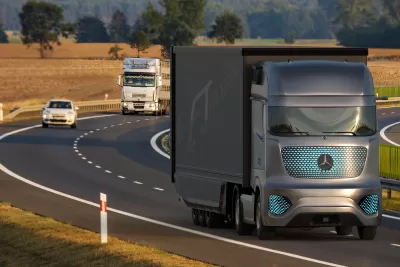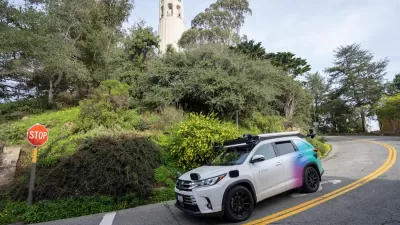A bill passed by the State Assembly and moving on to the Senate would require autonomous semi trucks to have a trained human operator in the vehicle.

According to an article by Maggie Angst in The Sacramento Bee, “California assembly members on Wednesday overwhelmingly voted to pass Assembly Bill 316, a proposal with bipartisan support to require a trained individual to sit behind the wheel of autonomous semitrucks and big rigs.”
Angst explains, “Current state law, established by the DMV, allows testing and deployment of driverless light-duty autonomous vehicles that weigh 10,000 pounds or less — stopping short of allowing the same for long-haul trucks and big rigs with autonomous capabilities.”
The bill’s author, Assemblywoman Cecilia Aguiar-Curry, D-Winters, said “we need to make sure that the roads are safe for the sake of our constituents and that jobs are safe for our truck drivers.” The bill is supported by truck drivers, who fear the loss of jobs to autonomous vehicles. “Supporters say the regulation would help protect people traveling on California roadways and support the livelihoods of truck drivers across the state.”
The move was criticized by industry leaders, who say the state should wait for federal guidance before deploying its own regulations on self-driving trucks. “Permitting the testing and deployment of autonomous trucks in California would help eliminate human errors, such as texting and driving and distraction, that contribute to traffic fatalities,” said Mufaddal Ezzy, senior director of state public affairs for software company Aurora.
FULL STORY: Lawmakers and Big Tech clash over the fate of self-driving semitrucks in California

Alabama: Trump Terminates Settlements for Black Communities Harmed By Raw Sewage
Trump deemed the landmark civil rights agreement “illegal DEI and environmental justice policy.”

Planetizen Federal Action Tracker
A weekly monitor of how Trump’s orders and actions are impacting planners and planning in America.

The 120 Year Old Tiny Home Villages That Sheltered San Francisco’s Earthquake Refugees
More than a century ago, San Francisco mobilized to house thousands of residents displaced by the 1906 earthquake. Could their strategy offer a model for the present?

In Both Crashes and Crime, Public Transportation is Far Safer than Driving
Contrary to popular assumptions, public transportation has far lower crash and crime rates than automobile travel. For safer communities, improve and encourage transit travel.

Report: Zoning Reforms Should Complement Nashville’s Ambitious Transit Plan
Without reform, restrictive zoning codes will limit the impact of the city’s planned transit expansion and could exclude some of the residents who depend on transit the most.

Judge Orders Release of Frozen IRA, IIJA Funding
The decision is a victory for environmental groups who charged that freezing funds for critical infrastructure and disaster response programs caused “real and irreparable harm” to communities.
Urban Design for Planners 1: Software Tools
This six-course series explores essential urban design concepts using open source software and equips planners with the tools they need to participate fully in the urban design process.
Planning for Universal Design
Learn the tools for implementing Universal Design in planning regulations.
Clanton & Associates, Inc.
Jessamine County Fiscal Court
Institute for Housing and Urban Development Studies (IHS)
City of Grandview
Harvard GSD Executive Education
Toledo-Lucas County Plan Commissions
Salt Lake City
NYU Wagner Graduate School of Public Service





























